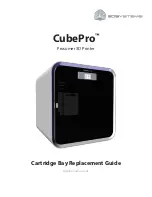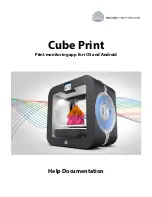
Operation Notes
107
6
• The image density varies according to the printing speed and the room tem-
perature. So, adjust the printing speed or increase the room temperature.
• When you make a lot of prints from a small image, ink might ooze out from
the edges of the master, especially under high temperature and when print-
ing in two or more colors. In this case, make a new master.
• Use ink made within one year. Ink stored for a long period tends to dry slow-
ly and yield lower image density.
• While making a master, do not leave the platen cover or optional document
feeder open.
• In Letter/Photo mode, moire patterns might occur when screened originals
are printed. In this case, make prints in Letter or Photo mode.
• When you use originals with light lettering, edges of the letters might be
printed clearly and the inside of the letters might be light. In this case, in-
crease the image density.
Print Paper
• When the paper is curled, stack the paper with the curl face down, otherwise
the paper might wrap around the drum or stains might appear.
• Postcards and the like do not absorb ink well. Offset images might appear on
the rear side of subsequent prints. Solid image originals will cause offset im-
age prints.
Originals
• If there is no margin or if there is a solid image area near the leading edge of
the original, make at least a 5 mm, 0.2", margin at the leading edge; otherwise,
the paper might wrap around the drum or the paper exit pawl might become
dirty and cause black lines on prints.
• If you use originals that have bold letters or solid images at the leading edges,
you might get prints with dirty edges. In this case, insert the widest margin
first, or raise the printing speed.
• If you use paste-up originals, select Paste Shadow Erase mode (see
⇒
P.21
“Paste Shadow Erase—Erasing The Shadow Of Pasted Originals”
) make sure that
the pasted parts hold firmly to the base sheet. If the thickness of the paste-up
originals is more than 0.1 mm and the space between the pasted parts is less
than 2 mm, 0.08", a shadow might appear on the print.
• Under the following conditions, the machine might not detect the original on
the exposure glass. If you press the
{
Start
}
key again, the machine will start
making a master anyway:
• When you set a dark original on the exposure glass.
• When the original is not centered according to the size marks on the right
scale.
Summary of Contents for Priport JP1030
Page 25: ...xviii This page is intentionally blank...
Page 93: ...SERVICE PROGRAM MODE 68 3 This page is intentionally blank...
Page 103: ...REPLENISHING SUPPLIES 78 4 This page is intentionally blank...
Page 148: ......
Page 168: ...xvi SilverV EN book Page xvi Monday May 15 2000 3 23 PM...
Page 224: ...Optional Functions 56 2 SilverV EN book Page 56 Monday May 15 2000 3 23 PM...
Page 240: ...Service Program Mode 72 3 SilverV EN book Page 72 Monday May 15 2000 3 23 PM...
Page 248: ...Replenishing Supplies 80 4 SilverV EN book Page 80 Monday May 15 2000 3 23 PM...
Page 284: ...Remarks 116 6 SilverV EN book Page 116 Monday May 15 2000 3 23 PM...
Page 357: ...Optional Functions 54 2...
Page 372: ...Master Roll Replacement 69 4 F F F F Close the plotter cover G G G G Push in the master tray...
Page 409: ...Remarks 106 6...
Page 418: ...115 MEMO...
Page 419: ...116 UE USA C238 MEMO...
















































